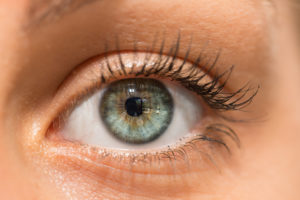LASIK Success Rates: How Safe is LASIK
LASIK Eye Surgery Safety and Success Rates

Patients who are considering LASIK at The Eye Institute of Utah often have questions about the safety and success of vision correction surgery. We welcome these questions because we are committed to patient education; we believe that you are more likely to take care of your eye health and feel confident in your decision if you are well-informed about the benefits and risks of LASIK.
Is LASIK Safe?
While any surgery carries some risk, LASIK is widely considered to be a safe procedure with a low rate of complications.1 Some of the most common LASIK side effects, such as dry eye or glare in vision, are almost always temporary and usually resolve within several weeks of surgery.2
There are a few ways you can increase your chance of having a successful LASIK surgery3:
- Choose an experienced LASIK surgeon.
- Prioritize advanced technology and the reputation of an eye center above cost.
- Be skeptical of LASIK surgeons who offer deals that sound too good to be true (they usually are!)
- Follow all presurgical and postsurgical instructions and attend all follow-up appointments.
As with any procedure, what matters most is if LASIK is safe for you in particular. The eye doctors at The Eye Institute of Utah pride themselves in putting patient safety first, and that includes taking a conservative approach when it comes to deciding who is a good candidate for LASIK. If our doctors determine that you have risk factors that may make LASIK less safe, they will not recommend the procedure for you. We also specialize in LASIK alternatives; depending on your needs, your doctor can discuss if PRK, Visian ICL, or Refractive Lens Exchange (RLE) may be better suited for you.
LASIK Side Effects and Complications
Side effects of LASIK surgery are often temporary and the overall complication rate is estimated to be less than one percent.1 Potential risks of LASIK include:
- Dry eyes
- Halos or glare in vision
- Undercorrection or overcorrection of vision
- Change or loss of vision
- Light sensitivity
- Infection
- Abnormal healing of corneal flap
Your LASIK surgeon will discuss all potential risks and benefits of LASIK with you during your consultation appointment.
Risks of Other Vision Correction Methods
If you are seeking a vision correction solution, we encourage you to research all of your options. This includes any vision correction method that you are currently using, such as contact lenses. Many people are attracted to LASIK because it requires little to no maintenance after surgery. Contact lenses require diligent care to minimize risks, but up to 90% of contact lens users do not follow instructions for proper lens care.4 Each year, as many as 1 out of every 500 contact lens wearers suffers an infection that could have consequences as serious as blindness.5 Studies have found that the long-term risk of infection from contact lenses is actually higher than that of LASIK.6
How LASIK Technology Has Advanced
LASIK received FDA approval in 1999 and since then it has become a popular and well-studied procedure. During LASIK surgery, a flap is created in your cornea. Originally a blade called a microkeratome was used for this step in the procedure, but we are now able to offer blade-free LASIK using a femtosecond laser to create the corneal flap. Other LASIK innovations include eye tracking technology and customizable wavefront guided lasers. At The Eye Institute of Utah, we use Alcon’s WaveLight Refractive Suite which is among the most advanced, state-of-the-art LASIK technology available. The WaveLight EX500 Excimer Laser and the WaveLight FS200 Femtosecond Laser allow our experienced LASIK surgeons to offer efficient, precise, and fully customized, blade-free LASIK. Learn more about our LASIK technology.
LASIK Success
Patient satisfaction studies report that over 98% of LASIK patients are satisfied with their results.7 The decision to have LASIK is a personal one, and the right choice for you will depend on your unique vision, eye health, and lifestyle. The millions of people who have had LASIK decided that the many benefits of vision correction surgery outweigh the potential risks.
Contact The Eye Institute of Utah
The LASIK surgeons at The Eye Institute of Utah have performed over 100,000 vision correction procedures and they are widely regarded to be leaders in the field of vision correction. Contact us with any questions you have about LASIK or schedule your consultation appointment today.
1American Academy of Ophthalmology. LASIK — Laser Eye Surgery. Available at: https://www.aao.org/eye-health/treatments/lasik Accessed October 17, 2019.
2Mayo Clinic. LASIK eye surgery. Available at: https://www.mayoclinic.org/tests-procedures/lasik-eye-surgery/about/pac-20384774 Accessed October 17, 2019.
3U.S. Food and Drug Administration. What are the risks and how can I find the right doctor for me? Available at: https://www.fda.gov/medical-devices/lasik/what-are-risks-and-how-can-i-find-right-doctor-me Accessed October 17, 2019.
4Bui TH, Cavanagh HD, Robertson DM. Patient compliance during contact lens wear: perceptions, awareness, and behavior.External Eye Contact Lens. 2010;36(6):334-9
5Dart JK, Radford CF, Minassian D, Verma S, Stapleton F. Risk factors for microbial keratitis with contemporary contact lenses: a case-control study.External Ophthalmology. 2008;115(10):1647-54, 1654 e1-3.
6Jordan Masters, Mehmet Kocak, Aaron Waite. Risk for microbial keratitis: Comparative metaanalysis of contact lens wearers and post-laser in situ keratomileusis patients. Journal of Cataract & Refractive Surgery, 2017; 43 (1): 67 DOI: 10.1016/j.jcrs.2016.10.022
7Journal of Cataract and Refractive Surgery 2016 Aug;42(8):1224-34. doi: 10.1016/j.jcrs.2016.07.012
